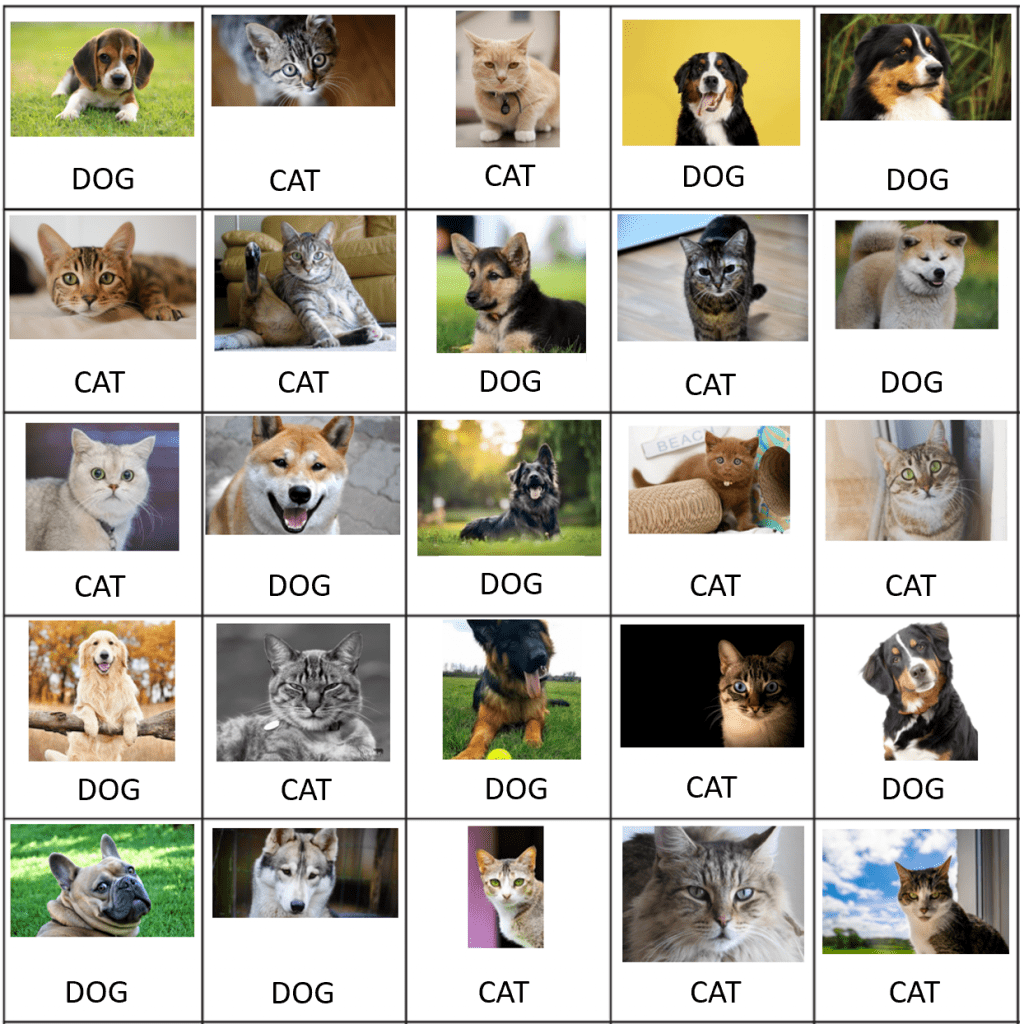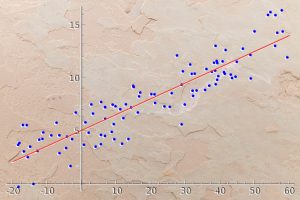In this article, we explain with concrete examples the difference between supervised and unsupervised algorithm.
As seen in the first course on the basics of machine learning, the latter is based on algorithms, also called models.
However, not every model can be applied in the same way.
The context will influence the type of algorithm used.
This context can be divided into 3 main categories:
- Supervised
- Unsupervised
- Reinforcement
And that is what we will see in this article!
Supervised Machine Learning
So-called supervised problems are problems in which humans support the algorithm used, and thus supervise it in the sense that the input data is labelled.
But what does labelled mean? It is data that has been previously identified and that will be used during the application of the programme. The Human therefore has a direct impact on the labelling of the data and consequently on the result.
Take for example this image bank containing dogs and cats, each image is “labelled”, i.e. we know what it represents.

The supervised algorithm will then work knowing that the first image on the top left is a dog, the next is a cat etc…
When we will test our model on a new image, the algorithm will then try to guess whether it is a cat or a dog.
Different algorithms can be used to train this kind of supervised model, they are classified in two categories. Here is a non-exhaustive list:
- Regression (Linear regression, Poisson regression…)
- Classification (Logistic regression, neural network, decision tree…)
Unsupervised Machine Learning
Unsupervised problems, in contrast to supervised problems, are problems in which humans do not provide any support to the algorithm used. The input data is therefore unlabelled.
So is unlabelled data just unidentified data? That’s right, it’s unidentified data that will be used in the application of the programme. The user already possesses this data but cannot understand exactly what it represents.
Not quite clear yet? Don’t worry, the following example will surely help you to better understand this concept.
In this example, unlike the last example, the images are not “labelled”. In fact, the algorithm does not know what they represent and this is its advantage.
By the way, if your goal is to master Deep Learning - I've prepared the Action plan to Master Neural networks. for you.
7 days of free advice from an Artificial Intelligence engineer to learn how to master neural networks from scratch:
- Plan your training
- Structure your projects
- Develop your Artificial Intelligence algorithms
I have based this program on scientific facts, on approaches proven by researchers, but also on my own techniques, which I have devised as I have gained experience in the field of Deep Learning.
To access it, click here :
Now we can get back to what I was talking about earlier.

Indeed, looking at these pictures, it seems obvious that the 2 categories are elephants and rhinos.
Unlike us, the algorithm will not restrict itself to this.
Indeed, thanks to the similarities of different images it will generate its own categories.
So a simple algorithm will probably find 2 categories just like you and me.
However, a more advanced algorithm will distinguish the images into four categories: Asian elephant, African elephant, black rhino and white rhino.
This is where unsupervised algorithms show their worth.
Here again is a short list of unsupervised algorithms, also divided into 2 categories:
- Clustering (k-mean clustering, hierarchical clustering…)
- Dimensionality Reduction (Variance thresholds, genetic algorithms…)
The so-called reinforcement ML problems
Finally, this latter category differs somewhat in that it is no longer a question of predicting but of reinforcing.
Here, the algorithm works on the basis of an agent ( program, robot…) which must perform a task. In accordance with its performance, it receives punishments or rewards. This agent does not need a human to function, and it learns and improves thanks to the reinforcement algorithm.
Unlike supervised and unsupervised problems where data is only implemented at the beginning, this algorithm adapts to a constant flow of data.
This category of machine learning is constantly developing and would deserve an article of its own. One of the examples that might resonate with you is artificial intelligence applied to chess!

A future article will be dedicated to reinforcement problems in order to better understand what is hidden behind this reward system.
See you soon on Inside Machine Learning ! 😉
sources :
- Photo by Nathanaël Desmeules on Unsplash
One last word, if you want to go further and learn about Deep Learning - I've prepared for you the Action plan to Master Neural networks. for you.
7 days of free advice from an Artificial Intelligence engineer to learn how to master neural networks from scratch:
- Plan your training
- Structure your projects
- Develop your Artificial Intelligence algorithms
I have based this program on scientific facts, on approaches proven by researchers, but also on my own techniques, which I have devised as I have gained experience in the field of Deep Learning.
To access it, click here :




